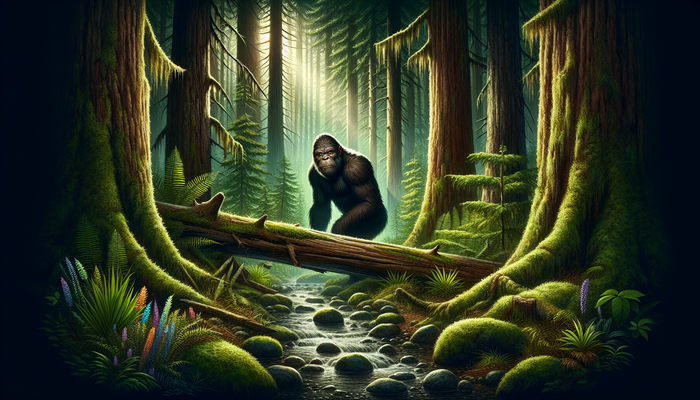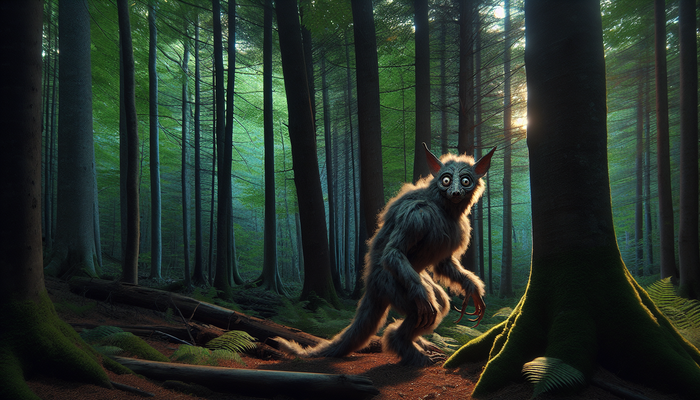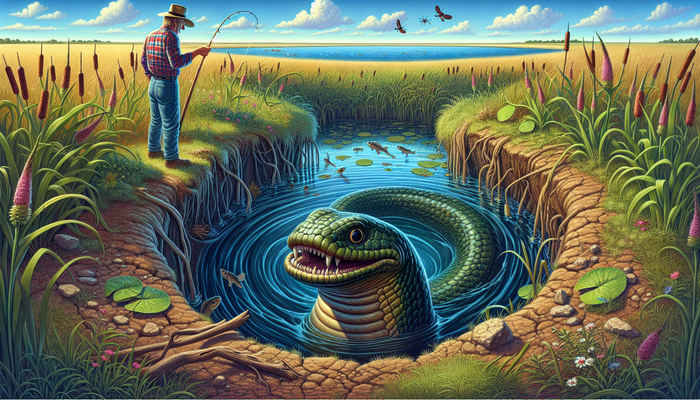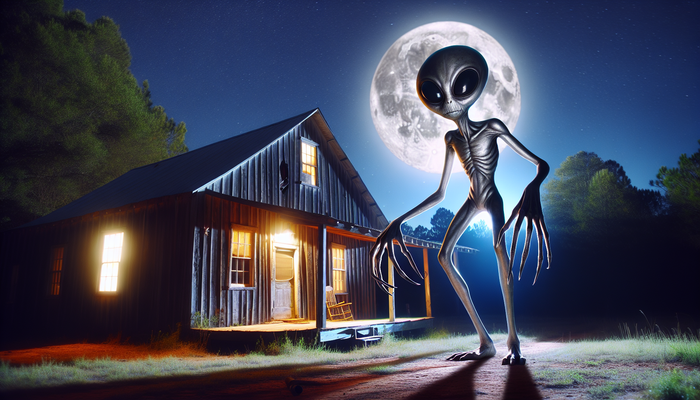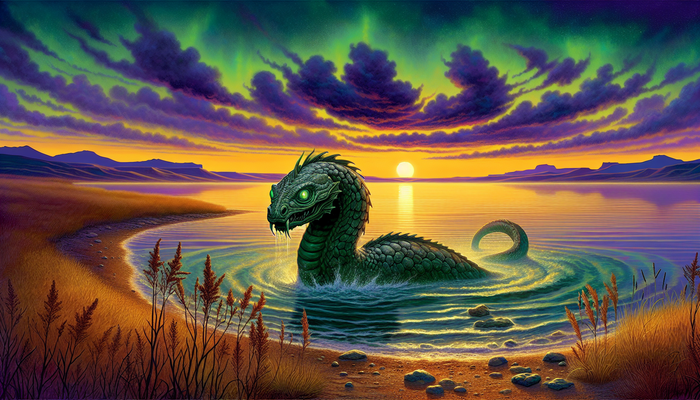Virginia's Legendary Cryptids
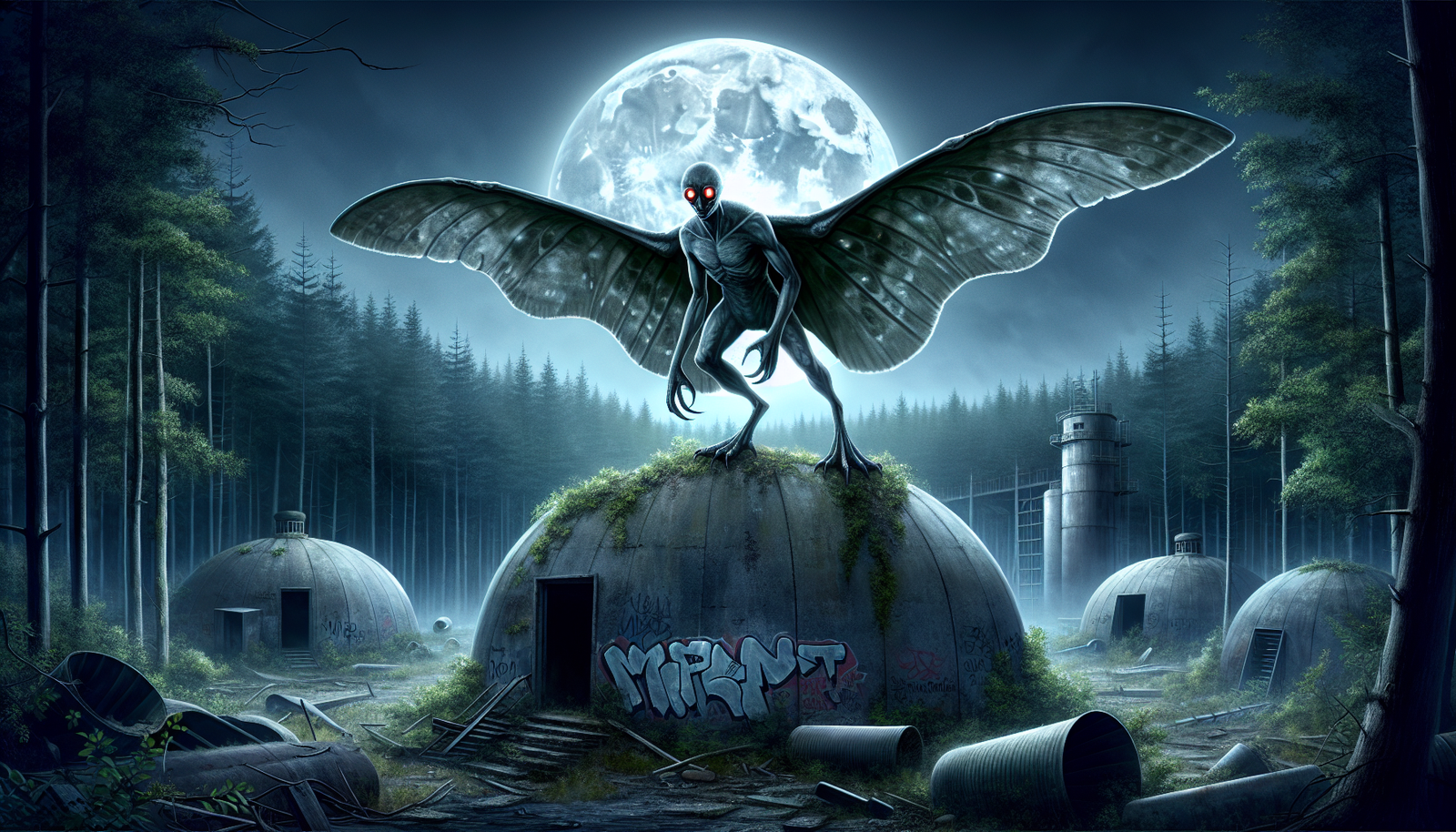
By Anthony Romano, Cryptozoologist
Virginia, a state renowned for its rich history, stunning natural beauty, and captivating folklore, has long been a haven for those seeking to unravel the mysteries of the unknown. As a software engineer by day and a passionate cryptozoology enthusiast by night, I have found myself irresistibly drawn to the enigmatic realm of Virginia's legendary cryptids. These elusive beings have captured the imaginations of Virginians for generations, weaving themselves into the very fabric of local legends and storytelling traditions.
From the iconic Mothman to the elusive Beast of Bladenboro, Virginia's cryptids have become an integral part of the state's unique cultural heritage. They inspire countless stories, sightings, and speculations, beckoning us to explore the shadowy depths of the state's forests, the misty peaks of its mountains, and the dark waters of its rivers and bays. Join me as we embark on a captivating journey through the mysterious world of Virginia's most intriguing cryptids, delving into their origins, descriptions, and the enduring impact they have had on the hearts and minds of those who call this remarkable state home.
The Mothman: West Virginia's Winged Wonder
No exploration of Virginia's cryptids would be complete without first paying homage to the legendary Mothman. This enigmatic winged humanoid first made its presence known in the Point Pleasant area of West Virginia back in 1966, but its influence has since spread across state lines, permeating the folklore of neighboring Virginia.
Eyewitness accounts describe the Mothman as a tall, gray figure with glowing red eyes and an impressive wingspan of up to 10 feet. Its appearance is both awe-inspiring and terrifying, a being that seems to defy the very laws of nature. Some believe the Mothman to be a harbinger of impending doom, pointing to its alleged appearance prior to the tragic collapse of the Silver Bridge in Point Pleasant in 1967. The bridge disaster claimed the lives of 46 people, forever linking the Mothman to this dark chapter in West Virginia's history.
Others speculate that the Mothman may be an undiscovered species, a creature that has somehow managed to evade scientific classification and study. Its unique combination of human and insect-like features has led some to suggest that it may even be of extraterrestrial origin, a visitor from another world that has chosen to make its home in the remote wilderness of Appalachia.
Regardless of its true nature, the Mothman has become a cultural icon, inspiring books, films, and countless works of art. The town of Point Pleasant has embraced its winged resident, erecting a statue in its honor and hosting an annual Mothman Festival that draws thousands of visitors from around the world. As a cryptozoology enthusiast, I have made the pilgrimage to Point Pleasant myself, eager to immerse myself in the lore and legacy of this fascinating creature.
The Beast of Bladenboro: A Feline Phantom
Moving southward from Point Pleasant, we come to the tale of the Beast of Bladenboro, a mysterious feline creature that has been spotted in the southern regions of Virginia. While this elusive predator is more commonly associated with North Carolina, its presence has been felt across state lines, leaving a trail of intrigue and speculation in its wake.
Eyewitness reports describe the Beast of Bladenboro as a large, cat-like creature, possibly a cougar or panther, with a distinctive screaming cry that echoes through the night. Its powerful build and stealthy movements have earned it a reputation as a fearsome hunter, one that is not to be trifled with.
The legend of the Beast dates back to the 1950s, when a series of livestock attacks and pet disappearances in the area were attributed to this mysterious predator. Farmers reported finding their animals savagely mauled, their bodies bearing the unmistakable marks of a large feline. The attacks sparked a wave of fear and speculation, with many locals convinced that a dangerous creature was lurking in the shadows, waiting to strike.
Despite numerous hunts and investigations, the true identity of the Beast of Bladenboro remains a mystery. Some believe it to be a real animal, perhaps an escaped exotic pet or a rare, undiscovered species of big cat. Others suggest that the sightings may be a case of mistaken identity, with witnesses confusing common animals like coyotes or bobcats for something more sinister.
As a researcher, I find myself drawn to the enigma of the Beast, eager to unravel the truth behind the legend. I have pored over historical accounts, interviewed eyewitnesses, and even ventured into the wilderness of southern Virginia, hoping to catch a glimpse of this elusive creature. While I have yet to encounter the Beast myself, I remain convinced that there is more to this story than meets the eye, and I am determined to uncover the secrets that lie at the heart of this enduring mystery.
The Snallygaster: A Dragon-like Menace
Venturing into the hills and forests of western Virginia, we find ourselves in the domain of the Snallygaster, a fearsome dragon-like creature that has been the subject of local folklore for centuries. This terrifying beast is said to inhabit the region around the Shenandoah Valley, a land of rolling hills, misty hollows, and dark, tangled woods.
According to legend, the Snallygaster is a massive, reptilian creature with leathery wings, a sharp, metallic beak, and razor-sharp teeth. Some accounts even describe it as having tentacles, adding an extra layer of horror to its already nightmarish appearance. With its powerful wings and keen senses, the Snallygaster is said to be a formidable predator, capable of swooping down from the sky to carry off livestock, pets, and even small children.
The origins of the Snallygaster legend can be traced back to the 18th century, when German immigrants first began settling in the region. These early pioneers brought with them tales of similar creatures from their homeland, stories of dragons and other mythical beasts that had long haunted the forests and mountains of Europe. Over time, these ancient tales merged with local folklore, giving rise to the legend of the Snallygaster.
As a cryptozoology enthusiast, I have long been fascinated by the Snallygaster and its place in Virginia's rich tapestry of folklore. I have spent countless hours researching the creature, poring over historical accounts and eyewitness reports, and even venturing into the wilderness of the Shenandoah Valley in search of clues to its existence.
While I have yet to encounter the Snallygaster myself, I remain convinced that there is more to this legend than mere myth and superstition. The consistency of the eyewitness accounts, the vivid details of the creature's appearance and behavior, and the sheer longevity of the legend all suggest that there may be a kernel of truth hidden within the tales of this fearsome beast.
Whether the Snallygaster is a real creature, a product of misidentification, or a manifestation of our deepest fears and desires, one thing is certain: it has left an indelible mark on the folklore and imagination of western Virginia. As long as there are dark forests and misty hollows, as long as there are tales to be told around campfires and hearths, the legend of the Snallygaster will endure, a testament to the enduring power of mystery and the human fascination with the unknown.
Bigfoot/Sasquatch: The Elusive Ape-man
No discussion of Virginia's cryptids would be complete without mentioning the legendary Bigfoot, also known as Sasquatch. This elusive, ape-like creature has been the subject of countless sightings and investigations across the United States, and Virginia is no exception.
According to eyewitness reports, Bigfoot is a tall, hairy, bipedal humanoid that inhabits the dense forests and remote wilderness areas of the state. Its appearance is said to be striking, with a muscular build, long arms, and a face that is at once human-like and distinctly primate in nature. Eyewitnesses often describe finding large, humanoid footprints in the wake of a Bigfoot sighting, as well as hearing strange vocalizations and catching whiffs of a powerful, musky odor that is said to accompany the creature's presence.
The legend of Bigfoot has deep roots in Native American folklore, with many tribes across North America telling stories of giant, hairy, man-like creatures that roam the wilderness. These ancient tales have merged with modern sightings and investigations, creating a rich and enduring legend that continues to captivate the imaginations of people around the world.
As a cryptozoology researcher, I have long been fascinated by the Bigfoot phenomenon, and I have dedicated countless hours to studying the evidence and interviewing eyewitnesses. While the scientific community remains skeptical of Bigfoot's existence, I believe that there is compelling evidence to suggest that this creature may be more than mere legend.
Some researchers have suggested that Bigfoot may be a surviving remnant of an extinct species of primate, perhaps a close relative of the gigantopithecus, a massive ape that once roamed the forests of Asia. Others have proposed that Bigfoot may be a previously unknown species of hominid, a missing link between humans and our primate ancestors.
Of course, there are also those who dismiss the Bigfoot legend as nothing more than a hoax or a case of misidentification. Skeptics argue that eyewitness accounts are unreliable and that the lack of concrete physical evidence, such as a body or DNA sample, casts doubt on the creature's existence.
Despite the ongoing debate, the legend of Bigfoot remains deeply ingrained in Virginia's folklore, and the creature continues to be a source of fascination and mystery for people across the state. Whether you are a believer or a skeptic, there is no denying the enduring power of this enigmatic creature and its place in the annals of cryptozoology.
The Devil Monkey: A Vicious Primate
Moving from the towering Bigfoot to a smaller, but no less fearsome creature, we come to the legend of the Devil Monkey. This vicious primate is said to inhabit the remote wilderness areas of southwestern Virginia, where it has been the subject of numerous eyewitness reports and local folklore.
According to legend, the Devil Monkey is a small, but incredibly aggressive primate with a baboon-like appearance and a long, thin tail. Eyewitnesses describe it as being incredibly fast and agile, capable of leaping great distances and climbing trees with ease. Some reports even suggest that the Devil Monkey has a taste for livestock, particularly chickens and goats, and that it will go to great lengths to secure its prey.
The origins of the Devil Monkey legend are unclear, with some speculating that it may be an escaped exotic pet or a previously unknown species of monkey that has somehow managed to evade scientific classification. Others believe that the Devil Monkey may have supernatural origins, pointing to its alleged ability to disappear and reappear at will, as well as its uncanny knack for avoiding capture.
As a cryptozoology researcher, I have been intrigued by the Devil Monkey legend for many years, and I have spent countless hours investigating eyewitness reports and exploring the rugged terrain of southwestern Virginia in search of clues to its existence. While I have yet to encounter the creature myself, I remain convinced that there is more to this legend than mere superstition or misidentification.
One of the most compelling aspects of the Devil Monkey legend is the consistency of the eyewitness reports. Despite the fact that these reports come from a wide range of individuals, from farmers and hunters to hikers and campers, they all describe a remarkably similar creature, with a consistent set of physical characteristics and behaviors.
Another intriguing aspect of the Devil Monkey legend is its potential connection to other primate-related cryptids from around the world. From the Orang Pendek of Sumatra to the Ahool of Java, there are numerous reports of small, aggressive primates that seem to defy scientific classification. Could the Devil Monkey be a part of this global phenomenon, a creature that has somehow managed to evade detection and study by the scientific community?
Regardless of its true nature, the Devil Monkey remains a fascinating and enduring part of Virginia's cryptozoological landscape. Its legend speaks to the enduring mystery and wonder of the natural world, and to the human fascination with the unknown and the unexplained. As long as there are dark forests and remote wilderness areas, as long as there are tales to be told and mysteries to be unraveled, the legend of the Devil Monkey will endure, a testament to the power of folklore and the human imagination.
Chessie: The Chesapeake Bay Beast
From the rugged mountains of southwestern Virginia, we turn our attention to the vast expanse of the Chesapeake Bay, where another legendary cryptid is said to make its home. Known as Chessie, this mysterious aquatic creature has been the subject of eyewitness reports and local folklore for generations, capturing the imaginations of sailors, fishermen, and beachgoers alike.
According to legend, Chessie is a massive, serpentine creature with a long, sinuous body, a horse-like head, and powerful flippers that allow it to glide effortlessly through the waters of the bay. Eyewitnesses describe it as being incredibly fast and agile, capable of outpacing even the swiftest boats and disappearing beneath the waves in the blink of an eye.
The origins of the Chessie legend are shrouded in mystery, with some speculating that the creature may be a surviving remnant of a prehistoric marine reptile, such as a plesiosaur or a mosasaur. Others suggest that Chessie may be a previously unknown species of giant eel or some other aquatic cryptid that has managed to evade scientific classification.
Sightings of Chessie have been reported since the 1930s, with eyewitnesses describing a creature that is both awe-inspiring and terrifying in its appearance and behavior. Some have even claimed to have captured photographs or video footage of the creature, although the validity of these images remains a subject of intense debate among cryptozoology researchers.
As someone who has long been fascinated by the mysteries of the deep, I have spent countless hours investigating the Chessie legend, poring over historical accounts, interviewing eyewitnesses, and even conducting my own expeditions in the waters of the Chesapeake Bay. While I have yet to encounter Chessie myself, I remain convinced that there is more to this legend than mere myth or misidentification.
One of the most compelling aspects of the Chessie legend is its enduring popularity and cultural significance. The creature has become a beloved part of Virginia's maritime folklore, inspiring countless works of art, literature, and music. It has even been adopted as the mascot of a minor league baseball team, the Norfolk Tides, a testament to its enduring appeal and the affection with which it is regarded by the people of Virginia.
Another intriguing aspect of the Chessie legend is its potential connection to other aquatic cryptids from around the world. From the Loch Ness Monster of Scotland to the Ogopogo of Canada, there are numerous reports of massive, serpentine creatures that seem to defy scientific explanation. Could Chessie be a part of this global phenomenon, a creature that has somehow managed to evade detection and study by the scientific community?
From Bigfoot to UFOs: Hangar 1 Publishing Has You Covered!
Explore Untold Stories: Venture into the world of UFOs, cryptids, Bigfoot, and beyond. Every story is a journey into the extraordinary.
Immersive Book Technology: Experience real videos, sights, and sounds within our books. Its not just reading; its an adventure.


